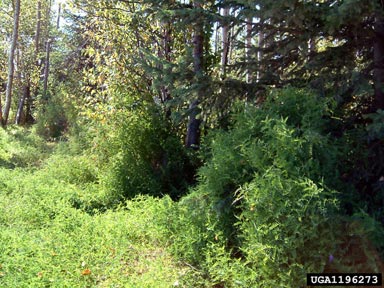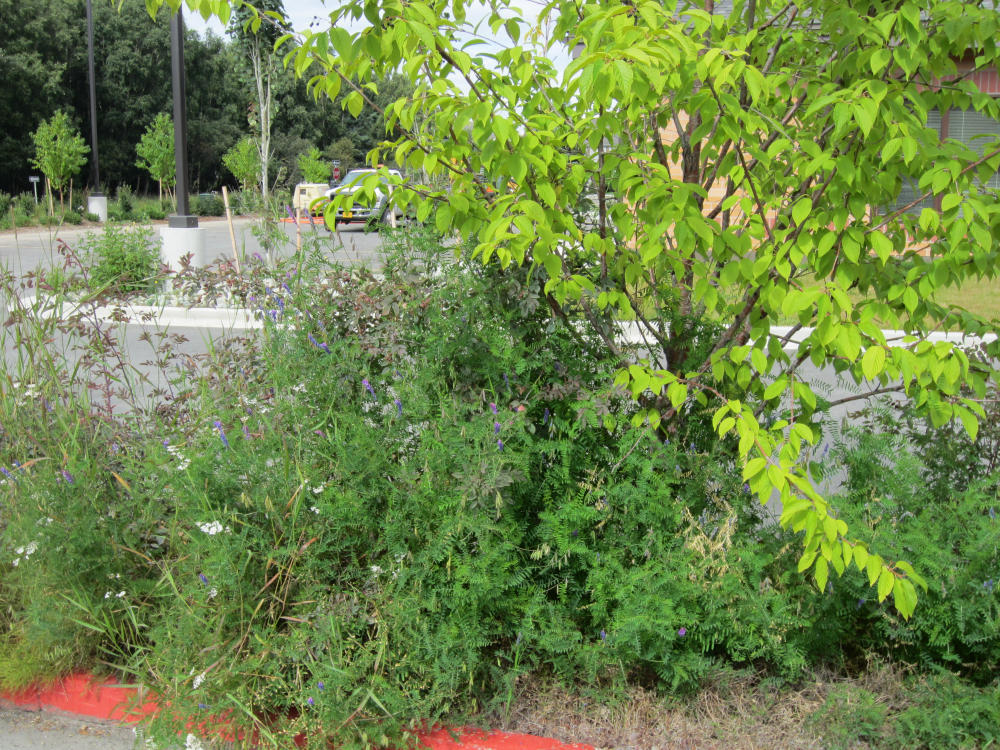Impacts from bird vetch vary depending on the location, but tend to revolve around the climbing and smothering growth habit. Bird vetch can use young trees as a host; it will climb them to increase exposure to sunlight (Wagner, 2017). For some trees such as spruce the climbing of bird vetch has no overall impact, while for species such as aspen climbing reduces photosynthesis and may compromise structural integrity–in some cases leading to death of young trees (Wagner, 2017). In wildland bird vetch is most likely to grow vigorously on south-facing forest edges where it can spread into forests until it is out-shaded. In landscape settings the climbing habit, particularly on trees and shrubs, can be unsightly. On some fences, particularly pasture fences, the dead vines of bird vetch combined with snow can damage fence structures.

The goals of an IPM plan for bird vetch management can vary from eradication to control for aesthetic purposes. In wildlands and some agricultural settings (e.g. annual grain production) eradication may be desired. Eradication in home gardens and landscapes can be difficult because of differences in the availability of registered herbicides and resulting consequences. In some landscape situations the only option is controlling bird vetch to reduce impact to desirable vegetation.


